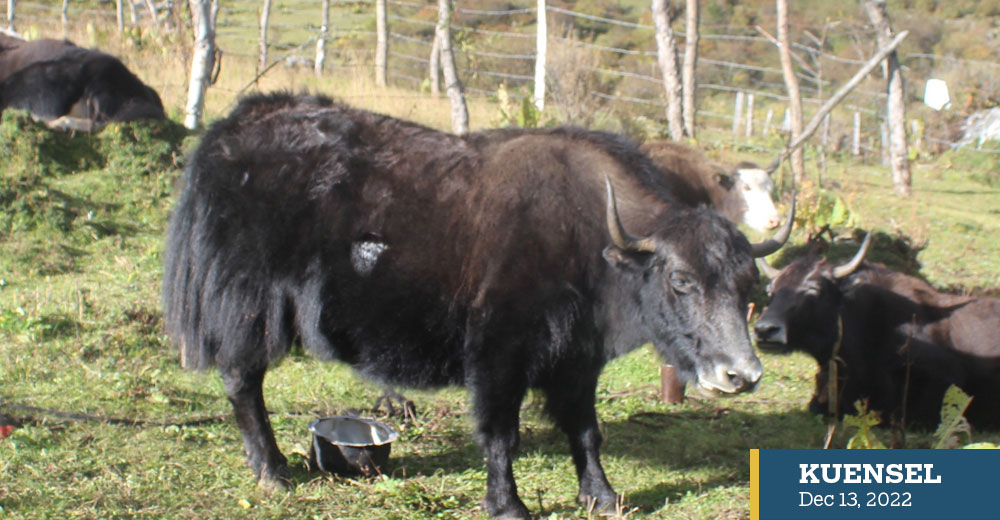Thinley Namgay
Although yak rearing has the potential to improve the livelihoods of highland communities, inadequate pastureland and wildlife depredation continue to threatened yak-farming culture.
The implementation of pastureland nationalisation policy has further discouraged the highlanders to continue yak-farming. Harsh climate, water scarcity, vandalism, diseases, and inadequate health facilities also hinder yak-farming.
To understand the cost-benefit of yak- herding and challenges, the Centre for Bhutan and GNH Studies conducted research among more than 100 highlanders from Merak, and Sakteng in Trashigang, Sephu in Wangdue, and Chhoekhor in Bumthang.
Yak- herding in Bhutan is sparsely distributed over 10 dzongkhags. Generally, number of yak and households rearing yak has decreased in the last 10 years.
The average annual net income gained from yak-herding in Merak is USD 1,119, which is equivalent to Nu 92,512.51, which works out to Nu 8,000 a month.
In Chhoekhor, the average net income is USD 903, USD 472 in Sakteng, and USD -282 in Sephu.
The study shows that Chhoekhor and Sephu spent about 10 times more on commercial feeds such as Karma feed compared to Merak and Sakteng.
Herders of Chhoekhor and Sephu are mostly engaged in cordyceps and herbal medicines collections, while; the majority of households in Merak and Sakteng still rely on yaks.
Given adequate pastureland, yak- farming has good future in Merak and Sakteng, according to the study.
According to the National Statistics Bureau 2021, Chhoekhor had 2,437 yaks, Sephu 1,545, Merak 3,471, and Sakteng 3,001.
However, these four communities differ greatly in terms of the number of tsamdro areas (acres) per yak. The number of tsamdro areas (acres) per yak in Chhoekhor is 11.7, Sephu 23.5, Merak 4.02 and Sakteng 6.4.
If shrub cover, non-grazable space, and fodder grazed by wild animals are excluded, the actual grazable area is insignificant in Merak and Sakteng.
Moreover, pastureland expansion has reached saturation in Merak and Sakteng, as both the gewogs share their pastureland border with Arunachal Pradesh in the north and east, and with Phongmey, Radi, and Kangpara gewogs to the west and south.
Yak- depredation by wild animals is a major problem for Sephu and Chhoekhor owing to rugged terrain.
In Merak and Sakteng, peak yak- depredation occurs between autumn and winter when yaks migrate to lower altitude places. Tigers, wild dogs and black bears are the common predators.
The government initiatives
The government initiated a Highland Development Programme as one of the flagship programmes in the 12th five-year plan. This programme involves the free distribution of high-quality breeding bulls and improving yak breeds through artificial insemination.
The legalisation on cordyceps harvesting was another major solution to encourage yak- herding.
The government also started the yak federation to promote and protect yaks, product diversification, marketing, and sharing of knowledge among the yak-herding societies.
According to the study, the leasing of pastureland to highlanders based on a number of yaks could address both insufficient pastureland and forage issues in the highlands.


